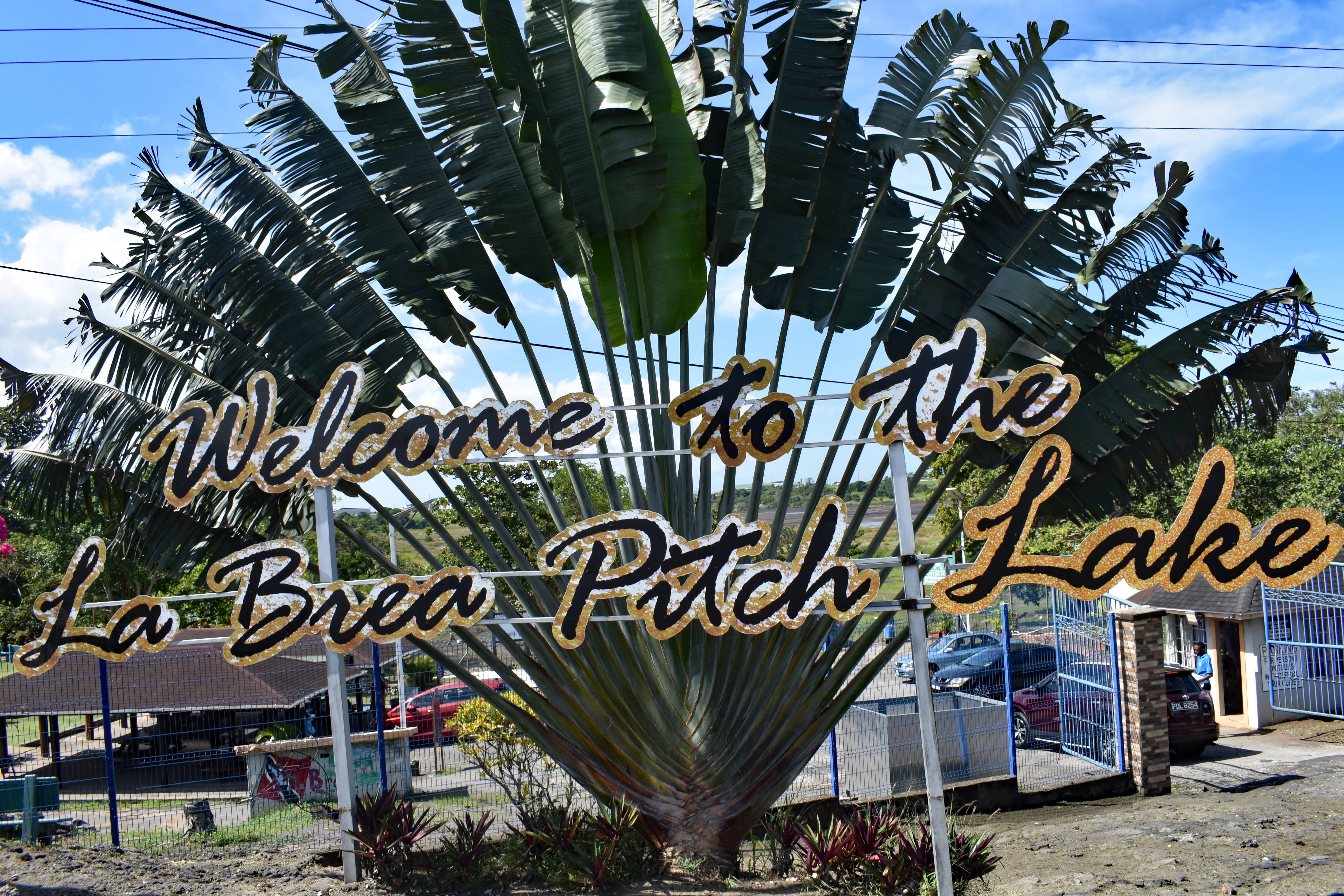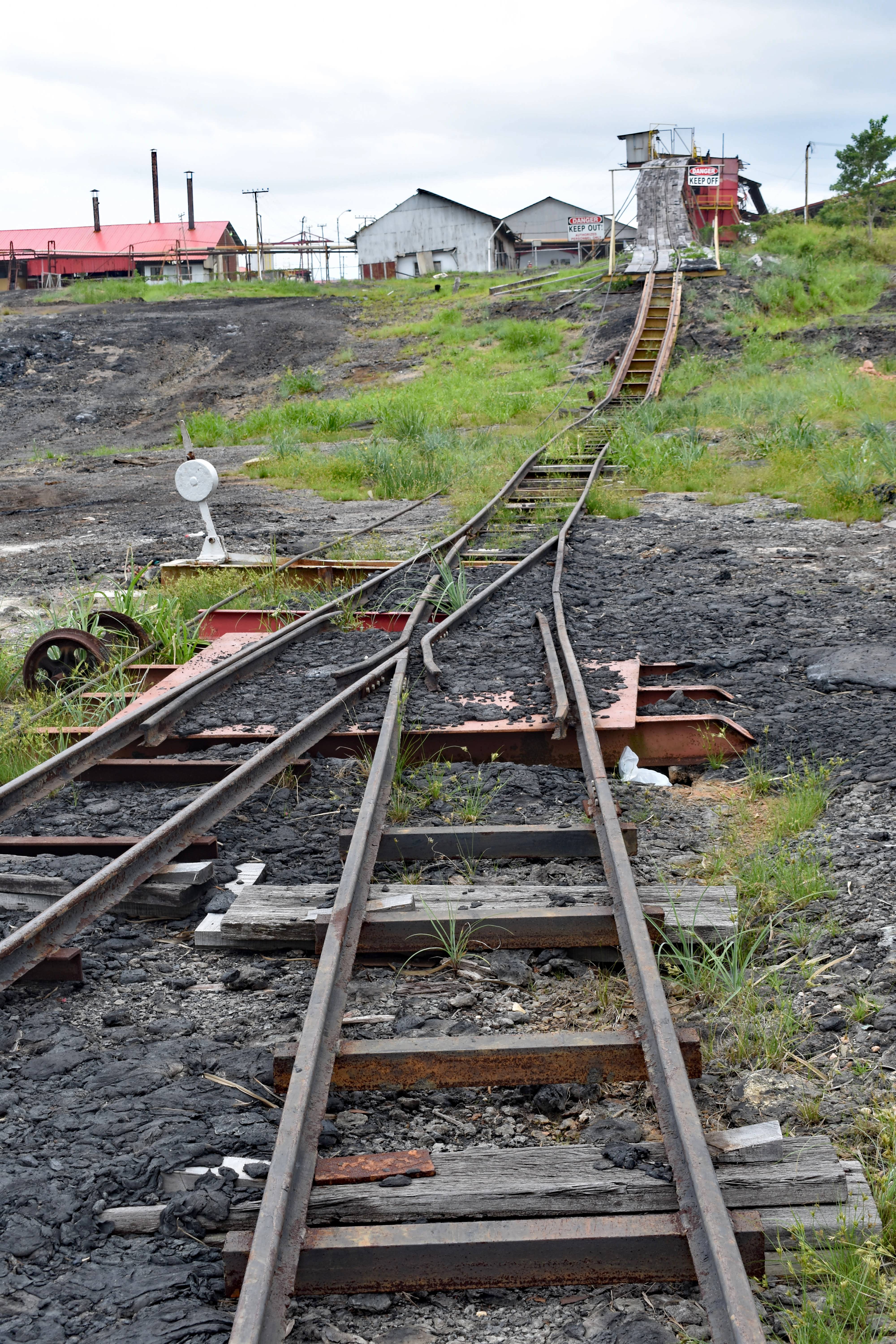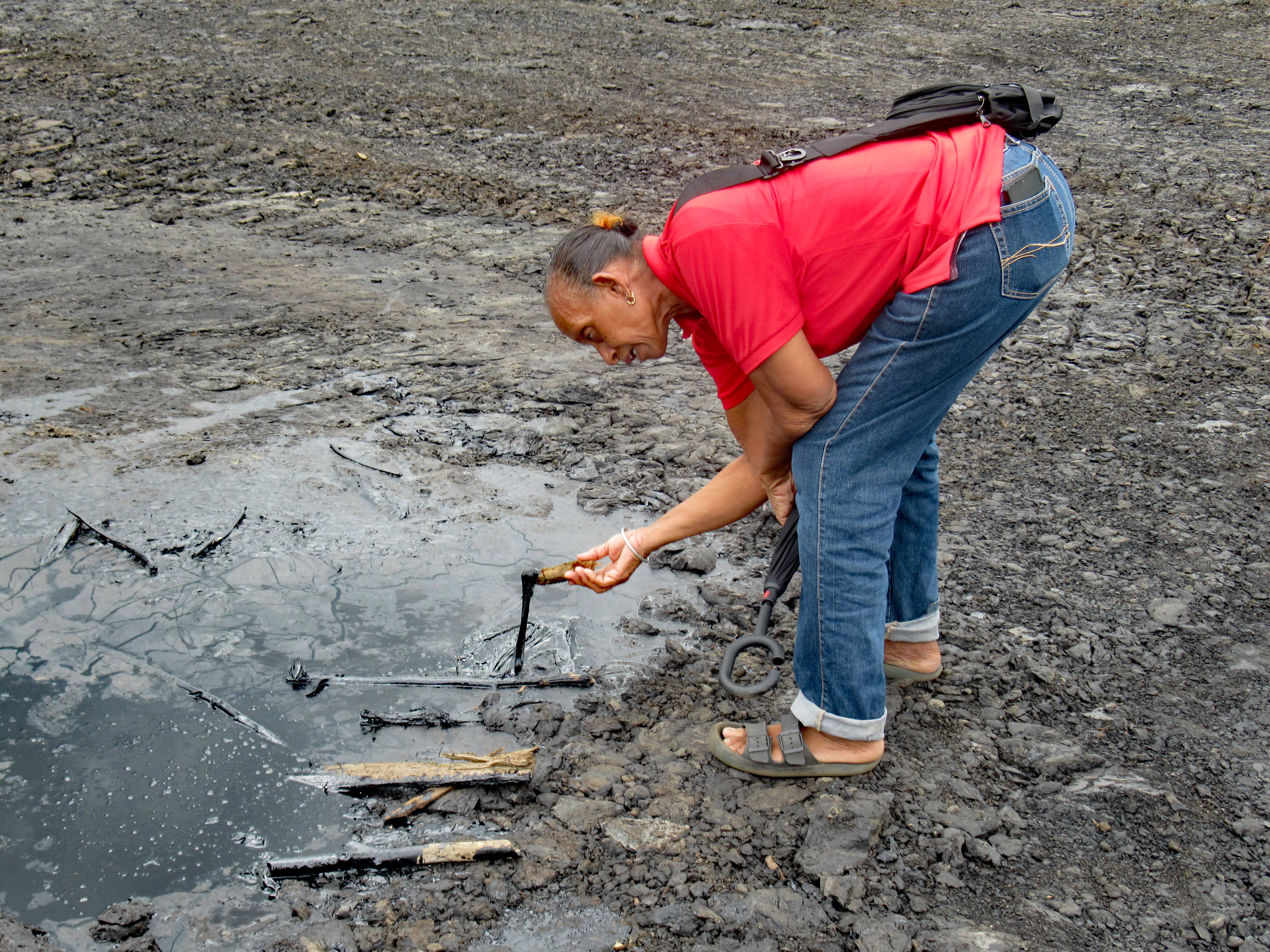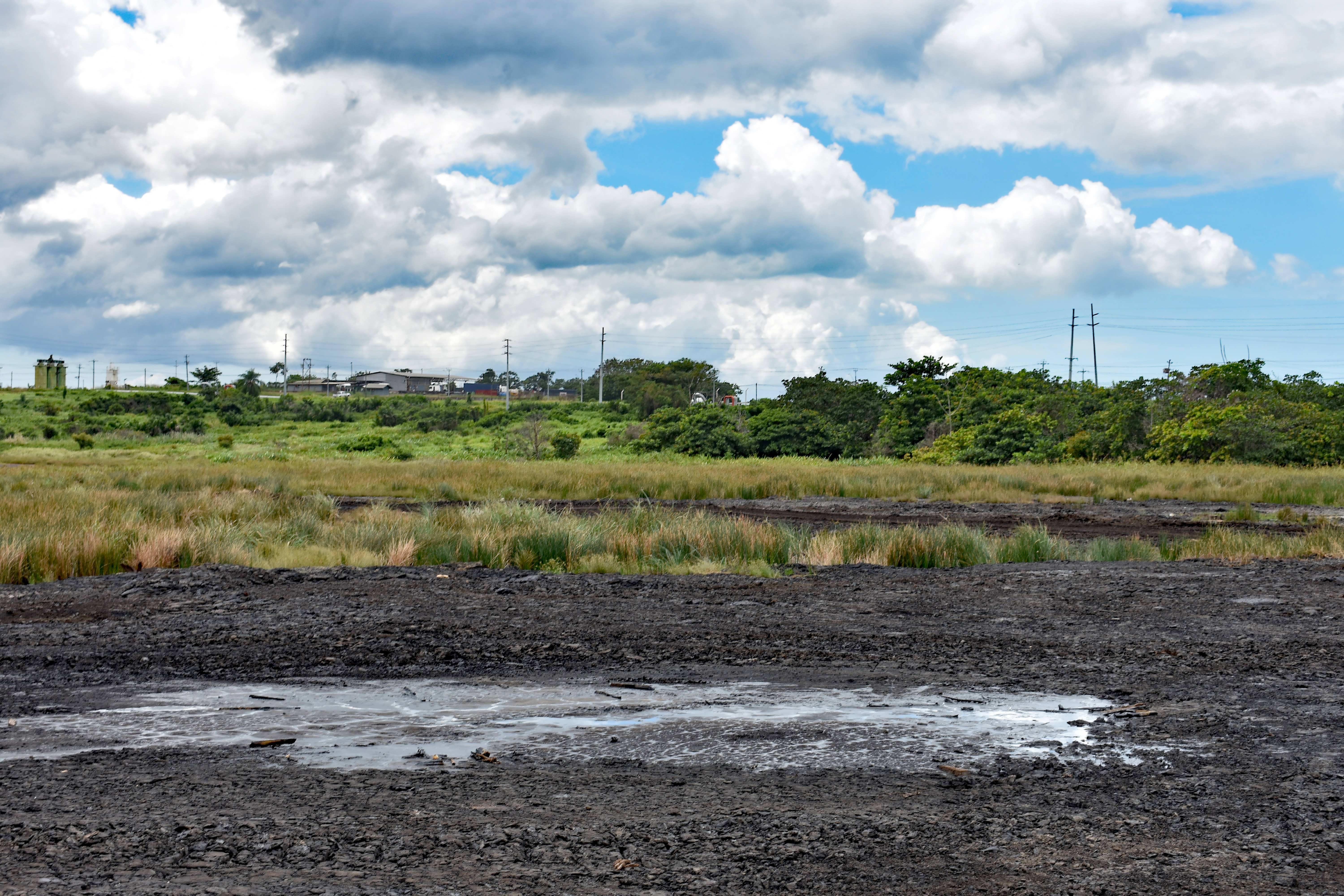Whilst staying in Port of Spain, we visited the Pitch Lake, often touted by Trinidadians as the eighth wonder of the world. There are only three natural asphalt lakes, with the other two being in Venezuela and Los Angeles.
Although advance research had told me that the lake covered 100 acres and was 250 feet deep at the centre, I found it hard to visualise both its scale, and what to expect. At the Visitor Centre we read the safety briefing which included the recommendation that ‘you have a light meal before going to the lake to avoid potential nausea from the methane and hydrogen sulphide emitted from the pitch’. The whole of the surrounding village is affected by the soft pitch which can result in buildings ‘moving’ and as we set off with our guide Amena, the two pillars at either side of the entrance were at a jaunty angle. Amena pointed out some of the flora and trees along the way, including shallow-rooted mango, and the West Indian Wild Cherry, a green, grape-like fruit which was incredibly bitter, and we were told to avoid a green low-growing bush with suckers which lined the path.
Amena explained the difference between pitch and asphalt and said that the pump house which was off limits drained excess rainwater to allow the excavation work to continue. Where the path was wet through rain, we were told to tread carefully, whilst in other stretches we had to follow in Amena’s exact footsteps to avoid being sucked in or ruining our shoes.
At a workers hut we sheltered from the sun whilst we heard how after extraction, the pitch takes a month to replenish, with maps determining the next site. Trucks on a rail carry the pitch up to the refinery, which employs around 100 men working in shifts. The pitch is exported all over the world, and we were told we would have driven on roads of Trinidad pitch hundreds of times. Probably not surprisingly, the biggest purchaser is China who have their own specifications in that they want it exported in smaller pellets than other countries.
We then walked down to a soft area with molten pitch and using a stick Amena demonstrated how liquid it was and then rather fiercely told us exactly where to stand so we could try it for ourselves.
The surrounding waters are said to be therapeutic due to their sulphur content and having seen online photos of people dipping themselves in, I was somewhat relieved to be told this wasn’t possible as there was a form of algae present which wasn’t good for the body.
Although we saw another group walk much further into the lake area, we were told it was only more of the same and turned around, which was somewhat disappointing as we didn’t feel we got an idea of the sheer scale of the operation.
However, heading back when we did was a good move, as the weather turned, and we scooted back to the centre. Here we headed upstairs to the small museum beginning with the history of the Pitch Lake which was ‘discovered’ by Sir Walter Raleigh in 1595 and who used the asphalt to caulk his battered ship. Photos of bygone days showed the same carts hauling the pitch, which at the time were pulled by mule rather than the current tractors. We also read about a legend associated with the lake. The indigenous people of the country were celebrating a victory over a rival tribe, which included cooking and eating the sacred hummingbird which they believed held the spirits of their ancestors. Therefore, the winged god opened up the earth and conjured up a lake of nasty pitch to swallow the entire village.
Whilst I’m not sure what I was expecting, I sadly felt leaving a little underwhelmed by the entire experience.












